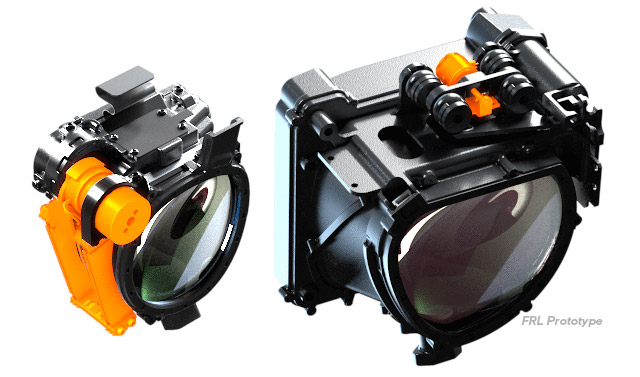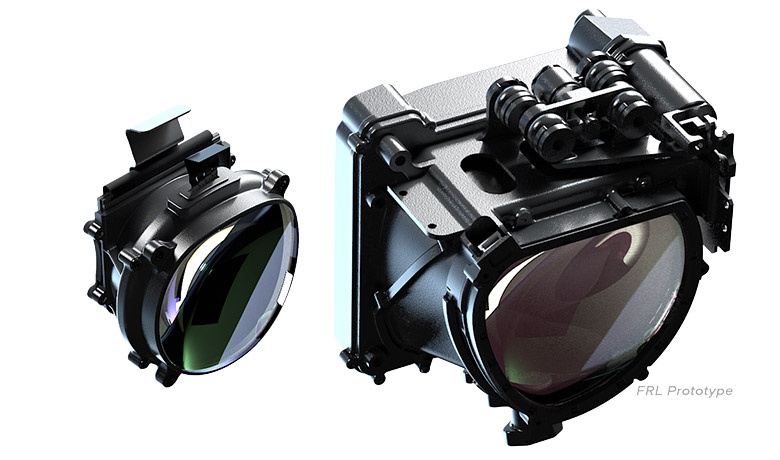Facebook Teases New Half-Dome Prototypes for Oculus Rift 2
Facebook Reality Labs Chief Michael Abrash has teased two new prototype virtual reality headsets, Half Dome 2 and Half Dome 3, during the Oculus Connect 6 today. Both headset prototypes provide improvements over the original Half Dome prototype that the company showcased last year. Each of these versions is geared at delivering a combination of a wider field-of-view (FOV) than the current compact virtual reality headsets along with a variable focus which matches the ability of the human eye to transition between seeing the details on close or distant objects.
As revealed by the Facebook Reality Labs chief scientist and further elaborated on in a deep dive blog post, the new Half Dome prototypes have been developed as tools for work, facilitating collaborative virtual workspaces. According to FRL, it is working on building internal headsets based on its technologies and also testing the feasibility of these technologies in its own offices before it rolls them out to the general public.

Half Dome 2 has been designed with a motorized varifocal system that is built around voice coil actuators along with flexure hinge arrays. Half Dome 3, on the other hand, is built with a new electronic varifocal system that consists of a combination of six liquid crystal lenses whereby the motorized-focused mechanism has been replaced with screens capable of shifting through 64 focal planes.
Both prototypes slightly compromise the original Half Dome’s original unusually wide 140-degree field of view and replaces it with an FOV that is dramatically smaller than before. This makes for more comfortable varifocal headsets.
According to Facebook, the Half Dome 2 will provide a 20% wider field of view than the Oculus Quest headset. At the same time, it is 200 grams lighter than the Half Dome 1. Oculus Quest’s horizontal field of view is roughly 90 degrees so the Half Dome 2 would have an horizontal field of view of approximately 108 degrees.

The Half Dome 3 prototype, on the other hand, deploy stacked polarization-dependent lenses along with switchable half-wave plates which allow for the prototype to realize a form factor that closely resembles the modern ski goggles. However, Facebook Reality Labs hasn’t provided any details on the specifications such as the size, weight or the field of view. However, the product is still just a prototype so the design is likely to change in the future as it gets refined. With research on the prototypes still ongoing, the size of the hardware could shrink even more before the company eventually decides to mass-manufacture the devices for its own internal use and testing.
At the moment, it is still unclear whether these prototypes will eventually hit the market with a Rift branding or whether Oculus will launch them as a higher enterprise-only hardware. The first Half Dome was initially thought to represent the direction of the future Rift hardware. However, disagreements on the future trajectory of the hardware was cited as one of the key factors contributing to the exit of Oculus cofounder Brendan Iribe in 2018 along with the departure of the Oculus Rift team leader Nate Mitchell.
Instead, Rift took a different path by launching its iterative $400 Rift S which it launched early this year to some disappointing reviews. Users were disappointed with the fact the Rift platform was moving laterally relative towards its predecessor as opposed to charting a new bold design.
Rather than enhanced resolution, incorporate eye-tracking or add wireless tracking hardware design to advance the platform in line with other future-forward trends in the headset design being embraced by its competitors, Oculus opted for the less ambitious route of simply augmenting the Rift platform by incorporating inside-out tracking cameras as well as open-air speakers that will help minimize the need to have separate tracking hardware as well as headphones. In another instance of an iterative approach as opposed to a revolutionary design, Oculus chose to meet the need for universal comfort by getting rid of the user-adjustable lenses and limiting its fit to just 70% of the user’s faces, down from 90% fit as was the case in the first Rift design.
In the past, Oculus chiefs have suggested that a quantum leap in approach involving new innovations such as varifocal focusing would be required to move the Rift platform forward as a sequel, a development that would make the Half Dome prototypes even more interesting. Today’s announcements seem to imply that the timeline for release for the technology may be lengthened and end up being tested internally instead of being released to early adopters next year.
https://virtualrealitytimes.com/2019/09/26/facebook-teases-new-half-dome-prototypes-for-oculus-rift-2/https://virtualrealitytimes.com/wp-content/uploads/2019/09/Half-Dome-2-Optical-Module-versus-Half-Mode-600x353.jpghttps://virtualrealitytimes.com/wp-content/uploads/2019/09/Half-Dome-2-Optical-Module-versus-Half-Mode-150x90.jpgBusinessHardwareOculusOculus RiftVR HeadsetsFacebook Reality Labs Chief Michael Abrash has teased two new prototype virtual reality headsets, Half Dome 2 and Half Dome 3, during the Oculus Connect 6 today. Both headset prototypes provide improvements over the original Half Dome prototype that the company showcased last year. Each of these versions is...Sam OchanjiSam Ochanji[email protected]EditorVirtual Reality Times - Metaverse & VR
